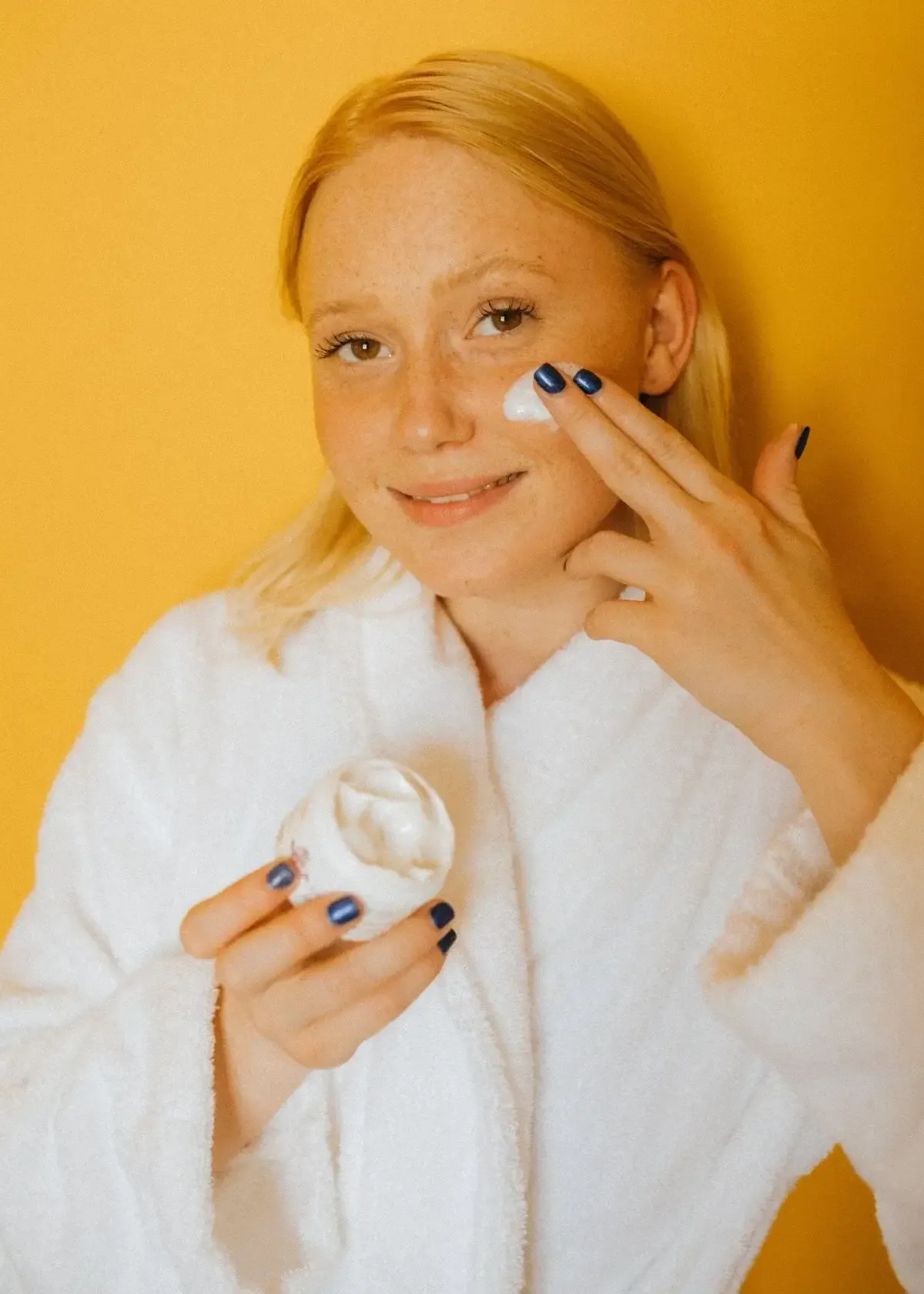Before delving into the factors contributing to hypertrophic scars, let's define them. Hypertrophic scars are raised, thickened scars that form due to an overproduction of collagen during wound healing. Unlike keloid scars, which extend beyond the boundaries of the original wound, hypertrophic scars remain within the confines of the injury site. Now, let's explore the various factors contributing to hypertrophic scar formation.
Biological Factors
Several biological factors can influence the development of hypertrophic scars:
1. Genetic Predisposition: Some individuals may have a genetic predisposition to developing hypertrophic scars. This means that their genetic makeup makes them more susceptible to abnormal scarring.
2. Wound Depth and Severity: The depth and severity of the initial wound can impact scar formation. Deeper and more severe wounds are more likely to develop hypertrophic scars.
3. Inflammation and Immune Response: An exaggerated inflammatory response and immune system reaction to the wound can contribute to the formation of hypertrophic scars.
Environmental Factors
In addition to biological factors, various environmental factors can also influence the development of hypertrophic scars:
1. Infection: Wound infections can delay healing and increase the likelihood of hypertrophic scar formation.
2. Poor Wound Care: Improper wound care, such as not keeping the wound clean and moisturized, can hinder proper healing and contribute to the development of hypertrophic scars.
3. Tension on the Wound Site: Excessive tension on the wound during the healing process can disrupt collagen synthesis and lead to hypertrophic scar formation.
Treatment Options
Fortunately, several treatment options are available for managing hypertrophic scars:
1. Topical Treatments: Various creams, gels, and ointments containing ingredients such as silicone, onion extract, or vitamin E can help reduce the appearance of hypertrophic scars when applied regularly.
2. Silicone Sheets/Gels: Silicone sheets or gels create a protective barrier over the scar and help regulate collagen production, resulting in flatter and softer scars.
3. Steroid Injections: Localized steroid injections can help flatten and reduce the redness of hypertrophic scars by suppressing the immune response and reducing collagen production.
4. Laser Therapy: Laser treatments can help remodel the scar tissue, improve scar texture and color, and stimulate collagen production.
5. Surgical Interventions: In some cases, surgical interventions such as scar revision or excision may be necessary to improve the appearance of hypertrophic scars.
Prevention Tips
While it may not always be possible to prevent hypertrophic scars entirely, there are steps individuals can take to minimize their risk:
1. Proper Wound Care: Cleanse the wound gently with mild soap and water, and keep it moist with an appropriate dressing to promote optimal healing.
2. Avoiding Excessive Tension on the Wound: Minimize tension on the wound site by using appropriate wound closure techniques and avoiding activities that strain or stretch the healing tissue.
3. Using Silicone Products: Apply silicone sheets or gels to the wound site, as they have been shown to help prevent hypertrophic scar formation.
4. Protecting the Wound from Sun Exposure: Shield the healing wound from direct sunlight and use sunscreen to protect the developing scar from UV radiation, as sun exposure can worsen hypertrophic scars.
Understanding the factors contributing to the development of hypertrophic scars is crucial for effective prevention and treatment. Biological factors, such as genetic predisposition to wound depth, and environmental factors, like infection and poor wound care, can influence scar formation. By following proper wound care practices, seeking prompt medical attention when necessary, and considering the available treatment options, individuals can minimize the impact of hypertrophic scars. If you have concerns about hypertrophic scars, consult a healthcare professional or dermatologist for personalized advice and guidance.
Introducing the ultimate solution for acne scars - our meticulously researched and curated collection of the best acne scar treatments. Say goodbye to lingering acne remnants and embrace a newfound confidence and radiance! This is your moment to take control of your skincare journey. Follow the link to discover your new favorite acne scar treatment. It's not just about information; it's a transformative experience that will revitalize your complexion. Seize the opportunity to redefine your skincare routine and rediscover the joy of clear, flawless skin. Click now to embark on the path to renewed self-assurance and a personalized skincare regimen tailored to your unique needs.
What types of lasers are used in laser acne scar treatments?
The realm of laser acne scar treatments encompasses various cutting-edge technologies, each designed to address specific scar characteristics. Fractional lasers, such as Fraxel, intricately target selected zones, inducing controlled microscopic injuries to stimulate collagen production and facilitate skin regeneration. Erbium and CO2 lasers, revered for their precision, focus on scar depth by selectively ablating layers of skin. Choosing these lasers is a nuanced decision, contingent upon factors like scar severity and individual skin nuances. This underscores the importance of a personalized approach guided by a seasoned dermatologist well-versed in the intricacies of laser technology.

What is the role of chemical peels in acne scar reduction?
Chemical peels are dynamic in reducing acne scars, operating through a meticulous, controlled exfoliation process. By inducing controlled peeling, these peels facilitate the shedding of the skin's outer layer, revealing smoother skin beneath and mitigating the visible impact of scars. The spectrum of chemical peels, from superficial to deep, caters to diverse scar types. Integrating chemical peels into an acne scar treatment plan enhances overall efficacy, particularly when strategically tailored to the patient's needs. Dermatologists leverage their expertise to customize chemical peel regimens, ensuring optimal results while prioritizing patient safety.

What are the considerations for combining different acne scar treatments?
Combining diverse acne scar treatments involves an artful orchestration, creating a synergistic approach that maximizes efficacy. Hybrid regimens may encompass a combination of lasers, microdermabrasion, or fillers, each addressing different dimensions of scarring. The seamless coordination of these treatments demands a nuanced understanding of individual scar characteristics and necessitates the expertise of a skilled dermatologist. This harmonious integration ensures a comprehensive solution, optimizing results and fostering a holistic improvement in skin texture and overall appearance.

How does the severity of acne impact the choice of scar treatment?
The impact of acne severity on scar treatment choices profoundly shapes the therapeutic approach. Mild scars may find relief in topical treatments, such as retinoids, which promote skin renewal and collagen production. Moderate to severe cases often necessitate more intensive interventions like laser therapy or surgical procedures to address deeper scarring. Dermatologists meticulously assess the history of acne, tailoring scar treatments to individual needs for optimal outcomes. This personalized approach reflects a nuanced understanding of the interplay between acne severity and scar characteristics, ensuring a targeted and effective treatment plan.

How is microdermabrasion different from other acne scar treatments?
Microdermabrasion distinguishes itself through a gentle yet effective, non-invasive approach, employing fine crystals or a diamond-tipped wand to delicately exfoliate the skin's outer layer. While less intense than lasers or chemical peels, microdermabrasion is suitable for mild scarring. Multiple sessions may be required for noticeable improvement, making it an attractive option for certain scar types. Dermatologists recommend microdermabrasion as part of a comprehensive treatment plan, leveraging its unique benefits to enhance skin texture and promote a rejuvenated complexion.
Should topical or oral medications be part of an acne scar treatment plan?
Integrating topical or oral medications into an acne scar treatment plan depends on scar type and individual factors. Topical medications, such as retinoids, are pivotal in facilitating skin renewal, stimulating collagen production, and addressing surface irregularities—oral medications, including antibiotics or isotretinoin, target underlying causes and inflammatory factors contributing to scarring. A dermatologist's nuanced guidance ensures a balanced and personalized approach, optimizing scar reduction and preventing future acne issues. Combining medications with other modalities, this comprehensive strategy reflects a holistic commitment to long-term skin health and aesthetic improvement.







